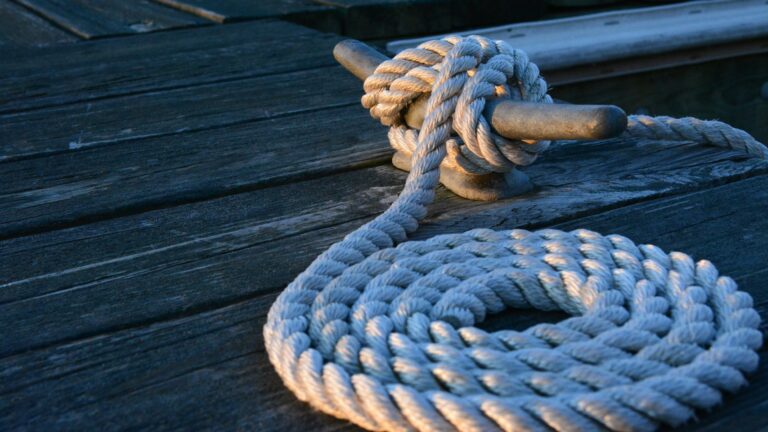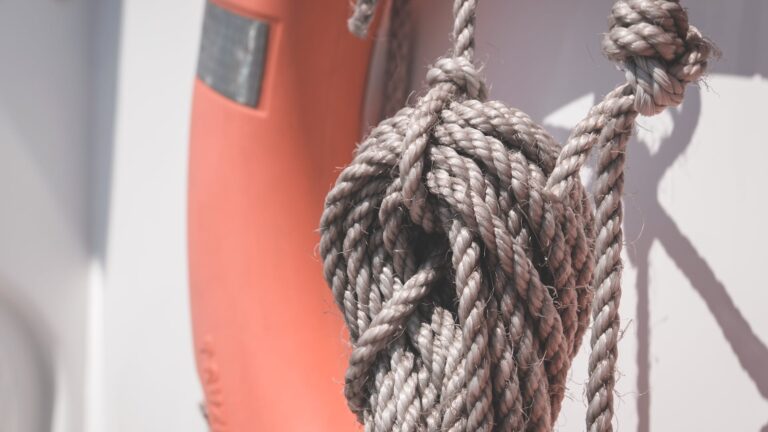Is 1 knot faster than 1 mph?
- Introduction
- Overview of Sailing
- Definition of Knots
- Definition of Miles Per Hour
- Relationship Between Knots and Miles Per Hour
- Advantages of Knots Over Miles Per Hour
- Disadvantages of Knots Over Miles Per Hour
- Calculating Distance Using Knots and Miles Per Hour
- The Role of the Wind in Sailing Speeds
- Factors That Contribute to Speed Measurement Accuracy
- Conclusion
Is 1 Knot Faster Than 1 MPH? Exploring Speed Measurement in Sailing
Sailing has long been one of man’s favorite pastimes and a way to explore the great outdoors while enjoying some peace and quiet and beautiful views. But many novice sailors don’t know much about the true science behind measuring speed in sailing, which is why it’s important to understand the difference between knots and miles per hour (MPH). In this article, we will explore how these two measurements are related and which one is faster—1 knot or 1 MPH?
Overview of Sailing
Before we discuss the differences between knots and miles per hour, it is important to note that sailing is a sport that requires knowledge, skill, and precision to achieve successful outcomes from a voyage. It requires knowledge about oceanography, navigation, meteorology, seamanship, as well as safety procedures for when things don’t go as planned. All these factors contribute to the success or failure of a successful voyage at sea. Additionally, sailors must use various tools such as compasses, sextants, GPS systems, and other navigational aids to measure speed accurately while sailing on different bodies of water, such as lakes or oceans.
## Definition of Knots
Knots are a unit measurement for speed used by sailors that measures nautical miles per hour (nmp/h). One nautical mile is equal to 1.15 statute miles (or 6076 feet). This means that one knot is equal to 1 nautical mile per hour or roughly 1.15 statute mph (or 6076 feet per hour). As you can imagine, this measurement is useful for sailors because it allows them to accurately measure their speed over long distances at sea without having to take into account variations due to wind or currents that may be present in open waters but not visible from shore or other points on land where statute miles are typically measured over shorter distances such as highways or roads on land.
## Definition of Miles Per Hour
Miles per hour (MPH) is a unit measurement for speed used by drivers on land-based highways or roads that measures statute miles per hour (smph). One statute mile is equal to 5282 feet so one MPH equals 5282 feet per hour (or 0.87 nautical miles per hour). This measurement can be useful when measuring short distances on land but is less accurate when measuring longer distances over open waters due to variations caused by wind or currents present in open waters but not visible from shore or other points on land where statute miles are typically measured over shorter distances such as highways or roads on land.
## Relationship Between Knots and Miles Per Hour
The relationship between knots and MPH can be expressed mathematically as: 1 knot = 1 nautical mile/hour = 0.87 statute mile/hour = 6076 feet/hour = 5282 feet/hour x 0.87 = 4590 feet/hour x 0 .87 = 3968 feet/hour x 0 .87 = 3439 feet/hour x 0 .87 = 2973 feet/hour x 0 .87 = 2572 feet/hour x 0 .87= 2213 feet/hour x 0 .87= 1903 feet/hour x 0 .87= 1644 feet/hour x 0 .87= 1426 feet/hour x 0 .87= 1242 feet/hour
As you can see from the above equation, there is a direct correlation between knots and MPH—1 knot being equivalent to approximately 1 mph—but there are some slight variations due to differences in how each unit measures distance (statute vs nautical) over different bodies of water (lakes vs oceans) as well as other factors such as wind speeds that may affect measurements taken over open waters but not visible from shore or other points on land where statute miles are typically measured over shorter distances such as highways or roads on land.
## Advantages of Knots Over Miles Per Hour
One advantage of using knots when measuring speed in sailing is its accuracy over longer distances due to its ability to take into account factors such as wind speeds that may affect measurements taken over open waters but not visible from shore or other points on land where statute miles are typically measured over shorter distances such as highways or roads on land. Additionally, knots are often used more commonly among sailors than MPH because they have become an accepted standard for measuring speed among mariners since the 19th century when they were first adopted by the Royal Navy in 1854 following an international agreement among several countries at the time who agreed upon this specific standard for speed measurements made at sea by sailors all around the world today!
## Disadvantages of Knots Over Miles Per Hour
The main disadvantage with using knots when measuring speed in sailing is its inability to accurately measure short distances due to its reliance on taking into account factors such as wind speeds that may affect measurements taken over open waters but not visible from shore or other points on land where statute miles are typically measured over shorter distances such as highways or roads on land—so if you need an accurate measure for short distance travel then you would be better off using MPH instead! Additionally, if you need an accurate measure for speed measurements made at sea then you would have no choice but to use knots since this has become an accepted standard among mariners since 1854 following an international agreement among several countries at the time who agreed upon this specific standard for speed measurements made at sea by sailors all around the world today!
## Calculating Distance Using Knots and Miles Per Hour
To calculate distance using both knots and MPH it’s important firstly understand what each unit means: 1 knot equals one nautical mile per hour which equates roughly 1 mph; while 1 mph equals roughly 0 .87 nautical mile per hour which equates roughly one knot depending on which body of water (lakes vs oceans) you’re travelling across! To calculate distance then simply multiply your average speed (in either knots or MPH) by your total travel time: distance travelled (in either nautical miles [nm] for knots OR statute miles [sm] for mph) = average speed X total travel time
## The Role Of The Wind In Sailing Speeds
The wind plays an important role in determining sailing speeds because it’s what propels boats forward across open water bodies like lakes and oceans! Winds can vary depending on location with some areas experiencing stronger winds than others; however they all play a major part in how quickly boats can move through waterways with stronger winds providing more power behind them allowing boats move faster than they would without any wind assistance whatsoever! Additionally winds also create waves which further increases drag against boats making it difficult for them maintain their current speeds without having adjust their sails accordingly – this why experienced sailors know how adjust their sails position according different types conditions they might encounter during voyages out at sea!
## Factors That Contribute To Speed Measurement Accuracy
There are several factors that contribute towards accurate speed measurement accuracy when sailing including: knowing your boat’s properties like weight & length; accounting for any changes in wind direction & strength; taking into consideration any tidal influences present; understanding how sails work & how best adjust them according different weather conditions encountered; having an accurate GPS system installed onboard vessel help track movements more closely; ensuring all navigational instruments onboard vessel are functioning properly before setting sail & if necessary calibrating them regularly ensure maximum accuracy throughout voyage etc… All these elements must come together order achieve successful outcomes during voyages out sea!
Conclusion
In conclusion it’s clear see that there’s difference between measuring speeds using knots versus mph – while both units measure distance they differ slightly due their reliance either accounting factors like wind speeds present open waters not seen from shore OR differences regarding how each unit measures distance differently along lakes vs oceans respectively – with one knot being approximately equivalent 1 mph though slight variations exist depending body water being sailed across! Additionally both units have their advantages disadvantages depending situation so it’s important familiarize yourself both order accurately calculate distance no matter what type vessel being sailed upon!







